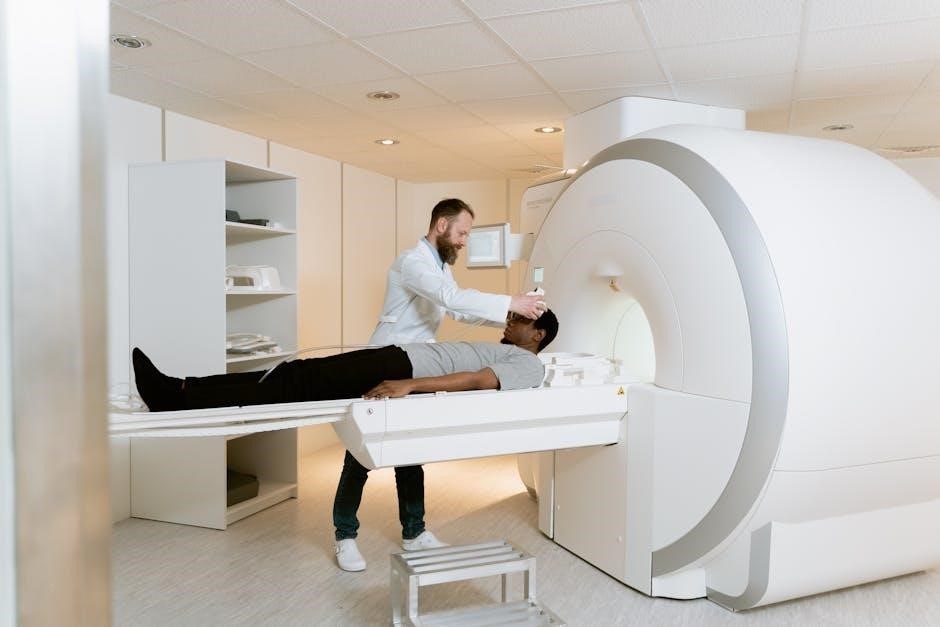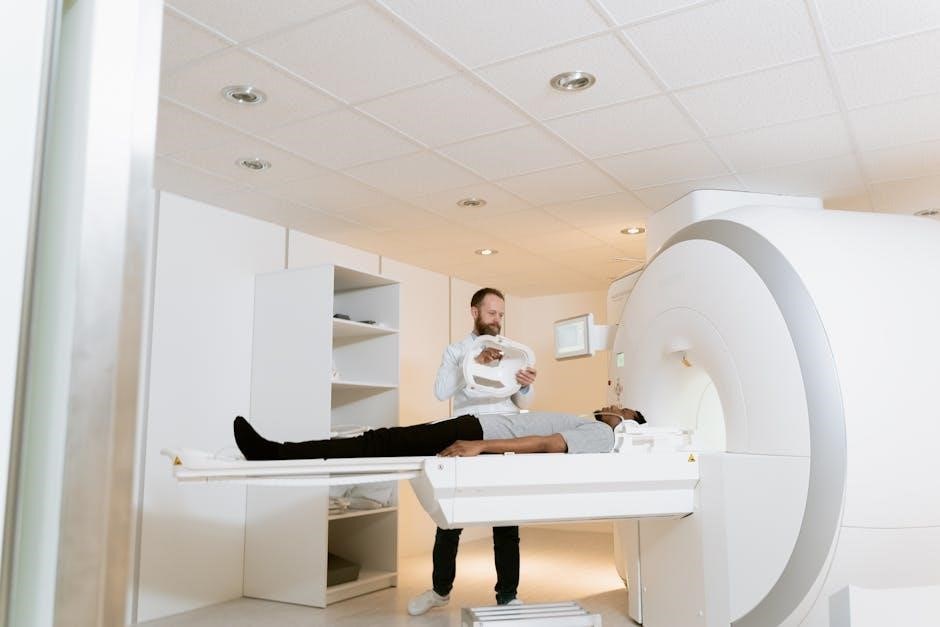
Occupational Self-Assessment (OSA) is a tool guiding collaborative treatment planning and measuring client-reported changes, helping individuals identify strengths, weaknesses, and goals for better occupational adaptation.
Definition and Purpose of Occupational Self-Assessment
The Occupational Self-Assessment (OSA) is a client-centered tool designed to evaluate an individual’s occupational performance and identify areas of need. Based on the Model of Human Occupation, it helps individuals and therapists collaborate on treatment planning, set realistic goals, and track progress over time. The OSA serves as both an assessment and outcome measure, providing insights into how individuals adapt to their environments and engage in daily activities, ultimately fostering independence and improved quality of life.
Importance of Self-Assessment in Occupational Therapy
Self-assessment in occupational therapy empowers individuals to actively participate in their care, fostering a deeper understanding of their abilities and challenges. By identifying strengths and areas for improvement, clients can engage more meaningfully in setting and achieving goals. This collaborative approach enhances therapy outcomes, promotes independence, and ensures interventions are client-centered and relevant. Regular self-assessment also allows therapists to monitor progress and adjust strategies, ensuring a personalized and effective treatment plan tailored to the individual’s needs and aspirations.

Understanding the Occupational Self-Assessment (OSA) Tool
The Occupational Self-Assessment (OSA) tool is designed to evaluate an individual’s occupational performance, identify areas of need, and guide goal-setting based on the Model of Human Occupation.
Structure and Components of the OSA
The Occupational Self-Assessment (OSA) tool is structured to evaluate an individual’s ability to perform daily occupations. It includes sections assessing personal care, productivity, and leisure activities. The tool identifies strengths, weaknesses, and areas for improvement, providing a clear framework for goal-setting and tracking progress. Based on the Model of Human Occupation, the OSA is client-centered, focusing on how individuals adapt to and engage in meaningful activities. It serves as a comprehensive guide for occupational therapists and clients to collaborate on effective treatment plans.
How the OSA Aligns with the Model of Human Occupation
The Occupational Self-Assessment (OSA) aligns with the Model of Human Occupation (MOHO) by focusing on occupation and adaptation. It evaluates an individual’s volition, habituation, and performance capacities, reflecting MOHO’s emphasis on understanding how people engage in meaningful activities. The OSA’s client-centered approach complements MOHO’s framework, enabling tailored interventions that address personal and environmental factors impacting occupational performance. This alignment ensures a holistic understanding of an individual’s occupational needs and abilities, fostering effective therapy plans.

Conducting an Occupational Self-Assessment
Conducting an Occupational Self-Assessment involves identifying strengths and weaknesses, setting realistic goals, and fostering occupational adaptation through collaborative planning and reflection, enhancing overall therapy effectiveness and client engagement.
Identifying Strengths and Weaknesses
Identifying strengths and weaknesses through the Occupational Self-Assessment (OSA) tool helps individuals understand their abilities and challenges, fostering self-awareness and guiding personalized goal-setting. The OSA encourages honest reflection, enabling clients to acknowledge areas of proficiency and identify gaps in occupational performance. This process supports the development of targeted strategies to enhance daily functioning and overall well-being. By highlighting both strengths and weaknesses, the OSA provides a clear foundation for effective occupational therapy interventions and collaborative planning.
Setting Realistic Occupational Goals
Setting realistic occupational goals is a critical step in the self-assessment process, enabling individuals to create achievable objectives tailored to their needs and aspirations. The OSA tool helps identify priorities and break them into manageable steps, ensuring goals are specific, measurable, and aligned with daily activities. Collaboration with therapists and caregivers fosters a supportive environment, promoting autonomy and motivation. By establishing clear, realistic goals, individuals can track progress and celebrate successes, enhancing their overall occupational performance and quality of life.
Monitoring Progress and Adjusting Strategies
Monitoring progress is essential for effective occupational self-assessment, allowing individuals to track improvements and identify areas needing adjustment. Regular review of goals and strategies ensures alignment with current needs and priorities. The OSA tool facilitates this process by providing a clear framework for documenting changes and reflecting on outcomes. Adjustments can be made collaboratively with therapists or caregivers, ensuring strategies remain relevant and impactful. This iterative process supports continuous growth and adaptation, enhancing overall occupational performance and goal attainment.

Using the Occupational Self-Assessment PDF
The Occupational Self-Assessment PDF is a practical tool for guiding treatment plans and tracking progress, offering a user-friendly format to document and analyze occupational performance effectively.
Downloading and Accessing the OSA PDF
The Occupational Self-Assessment (OSA) PDF is readily available online, serving as an essential resource for evaluating occupational performance. Users can download it from official occupational therapy websites or academic platforms. This tool is designed to help individuals and professionals identify areas of need, set realistic goals, and track progress over time. Accessing the OSA PDF is straightforward, with clear instructions provided to ensure effective use in various settings, from education to healthcare.
Completing the Assessment: A Step-by-Step Guide
Begin by understanding the purpose of the OSA to ensure accurate self-evaluation. Read each question carefully and answer honestly, reflecting on your current occupational abilities and challenges. Use the provided scale to rate your performance in various areas. Review your responses for consistency and completeness. Seek feedback from professionals or peers if needed. Finally, document your progress and use the insights to set realistic goals for improvement. This structured approach ensures a meaningful and effective assessment process.
Interpreting and Applying the Results
Analyze your OSA scores to identify areas of strength and weakness, gaining insights into your occupational abilities and challenges. Use the results to set realistic goals, prioritizing areas needing improvement. Develop targeted strategies to enhance performance and adapt to daily tasks. Collaborate with professionals to refine plans and monitor progress effectively. Regularly revisit and update your assessment to track changes and celebrate achievements, ensuring continuous growth and adaptation in your occupational pursuits.
Applying Occupational Self-Assessment in Different Settings
The Occupational Self-Assessment (OSA) is versatile, benefiting educational, healthcare, and workplace environments. It aids students, educators, and professionals in identifying needs, setting goals, and enhancing occupational performance collaboratively.
OSA in Educational Environments
The Occupational Self-Assessment (OSA) is a valuable tool in educational settings, helping students identify their strengths, challenges, and goals. Educators can use the OSA to support students in understanding their occupational performance and developing strategies for improvement. By fostering collaboration between students and educators, the OSA promotes personalized learning plans and enhances academic and personal growth. This approach ensures students are actively involved in their development, creating a tailored path toward achieving their educational and occupational aspirations.
OSA in Healthcare and Rehabilitation
The Occupational Self-Assessment (OSA) is widely used in healthcare and rehabilitation to identify patient needs, set realistic goals, and monitor progress. It serves as a collaborative tool between therapists and patients, fostering active participation in recovery. By aligning with the Model of Human Occupation, the OSA helps individuals regain functional abilities and adapt to daily challenges. This approach ensures personalized care, enhancing overall well-being and promoting successful rehabilitation outcomes in diverse healthcare settings.
OSA in Workplace and Employment Contexts
The Occupational Self-Assessment (OSA) is invaluable in workplace and employment settings, helping individuals and employers understand work capabilities and limitations. It enables employees to identify strengths, challenges, and career goals, fostering a collaborative approach to job performance. By aligning with occupational therapy principles, the OSA supports workplace modifications and accommodations, ensuring a better fit between employees’ abilities and job demands. This tool enhances productivity, job satisfaction, and overall well-being in diverse employment contexts.
Best Practices for Effective Self-Assessment
Creating a supportive environment, encouraging honest feedback, and using the OSA as a collaborative tool are key to fostering accurate and meaningful self-assessment in occupational therapy.
Creating a Supportive Environment for Self-Assessment
A supportive environment for self-assessment involves ensuring privacy, providing non-judgmental feedback, and fostering open communication. It encourages individuals to reflect honestly on their strengths and challenges without fear of criticism. Occupational therapists should promote a collaborative space where clients feel empowered to share their thoughts and goals. Access to clear resources and guidance further enhances the self-assessment process, making it more effective and meaningful for individuals in occupational therapy settings.
Encouraging Honest and Reflective Feedback
Encouraging honest and reflective feedback is crucial for effective self-assessment. This involves active listening, asking open-ended questions, and creating a safe space for individuals to express their thoughts. Providing specific examples and focusing on progress rather than perfection helps individuals gain deeper insights. Occupational therapists should model reflective practices and use the OSA tool to facilitate meaningful discussions, ensuring clients feel comfortable sharing their authentic experiences and perspectives throughout the assessment process.
Using the OSA as a Collaborative Tool
The Occupational Self-Assessment (OSA) is most effective when used collaboratively between clients and therapists. It fosters shared understanding and goal-setting by identifying strengths, challenges, and priorities together. This joint approach ensures that treatment plans are client-centered and aligned with their real-life needs. By engaging in open dialogue and active participation, both parties can work towards meaningful occupational outcomes, enhancing the overall effectiveness of the intervention and promoting a sense of ownership and accountability for the client.
Case Studies and Real-World Applications
Occupational Self-Assessment tools have proven effective in rehabilitation, education, and workplace settings, enabling individuals to identify strengths and challenges, fostering tailored goal-setting and problem-solving strategies for better outcomes.
Success Stories from Occupational Therapy Practices
Occupational Self-Assessment tools have empowered individuals in therapy practices to achieve significant progress. For instance, a patient with physical disabilities used the OSA to identify strengths in daily tasks and set realistic goals, leading to increased independence. Similarly, in educational settings, students applied the OSA to improve focus and productivity, demonstrating enhanced academic performance. These real-world applications highlight the tool’s effectiveness in guiding collaborative treatment plans and fostering meaningful occupational adaptation across diverse settings.
Challenges and Lessons Learned
Implementing the Occupational Self-Assessment (OSA) has revealed challenges, such as initial complexity for some users and the need for consistent guidance. Lessons learned emphasize the importance of proper training and support to maximize its effectiveness. Additionally, ensuring client engagement and addressing potential biases in assessment interpretations are critical. These insights highlight the value of adapting the OSA to individual needs and continuously refining its application to enhance occupational therapy outcomes and client satisfaction across diverse settings.
Future Trends in Occupational Self-Assessment
Future trends include integration with digital health platforms, personalized tools, and AI-driven assessments, enhancing accessibility and precision in occupational therapy practices globally, fostering better client outcomes.
Integration with Digital Health Platforms
The integration of Occupational Self-Assessment (OSA) with digital health platforms is revolutionizing accessibility and efficiency. Digital tools enable seamless data tracking, real-time progress monitoring, and personalized reports. Mobile apps and online portals allow clients to complete assessments remotely, enhancing convenience. This integration also supports better collaboration between therapists and clients, fostering a more dynamic and responsive approach to occupational therapy. By leveraging technology, the OSA becomes a more versatile and impactful tool for modern healthcare practices.
Personalized Assessment Tools and AI
Advancements in AI and personalized assessment tools are enhancing the Occupational Self-Assessment (OSA) process. AI-driven algorithms analyze client data to tailor assessments, offering customized insights and recommendations. These tools adapt to individual needs, providing more accurate and relevant feedback. AI also streamlines the interpretation of results, enabling therapists to focus on developing targeted interventions. Personalized tools empower clients to take an active role in their therapy, fostering independence and self-awareness. This integration ensures the OSA remains a dynamic and effective tool for occupational therapy.
The Occupational Self-Assessment (OSA) is a powerful tool for empowerment and growth, enabling individuals to identify strengths and areas for improvement, fostering independence and self-awareness.
Summarizing the Value of Occupational Self-Assessment

The Occupational Self-Assessment (OSA) is a valuable tool empowering individuals to identify strengths, challenges, and goals, fostering self-awareness and collaboration with therapists. By measuring client-reported changes, it aids in creating personalized plans for occupational adaptation, enhancing independence and overall well-being.
Encouraging Continued Use and Development of the OSA
The Occupational Self-Assessment (OSA) remains a vital tool for fostering independence and adaptive strategies, benefiting both clients and therapists. Its accessibility as a PDF enhances its practicality across educational, healthcare, and workplace settings. By integrating with digital platforms and leveraging AI, the OSA can evolve to meet diverse needs, ensuring personalized and collaborative approaches to occupational therapy. Continued development and adoption of the OSA will further empower individuals to achieve their goals and improve their quality of life.





